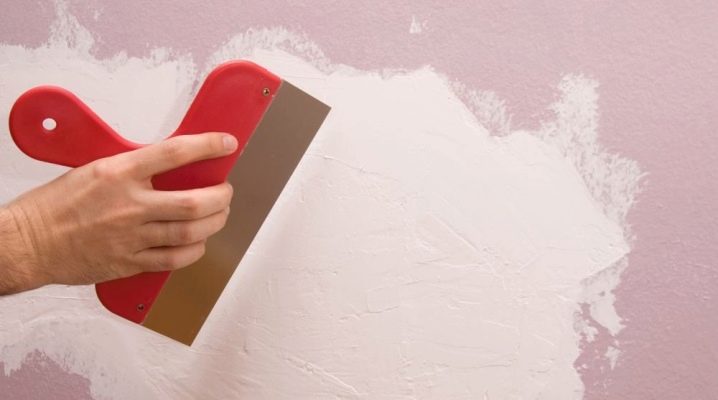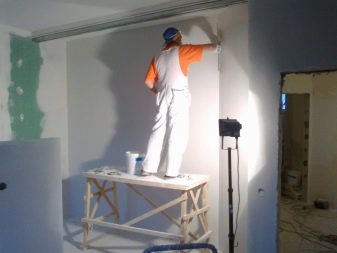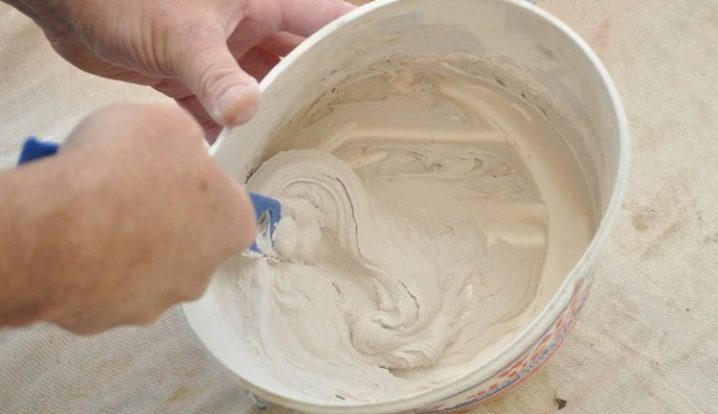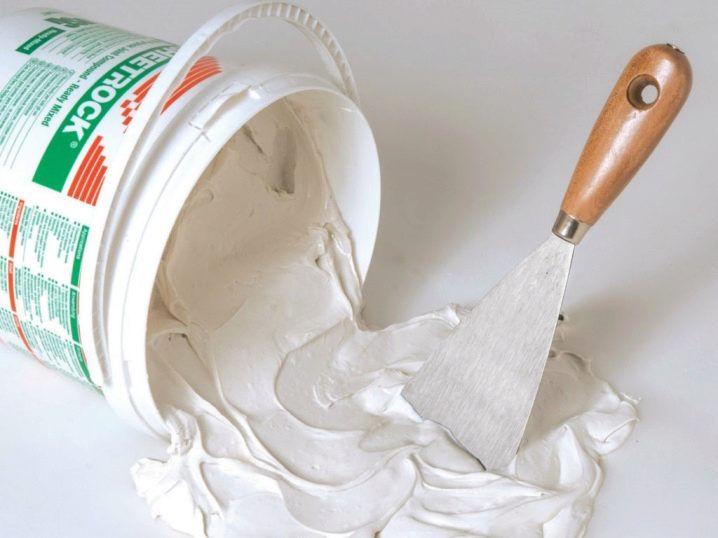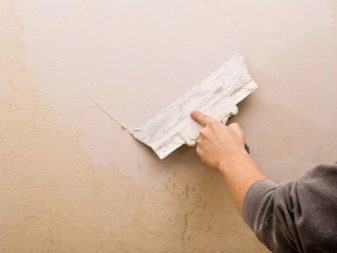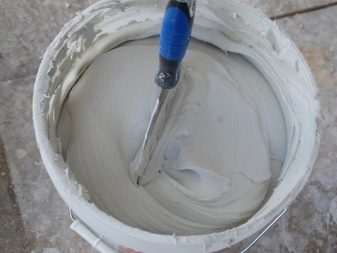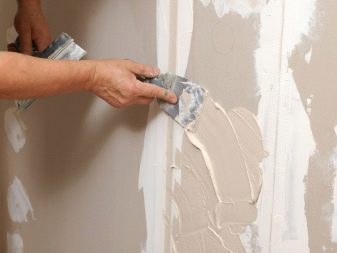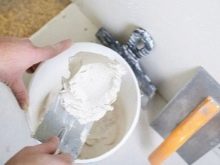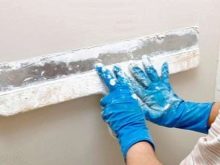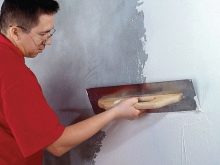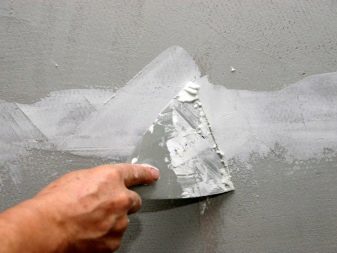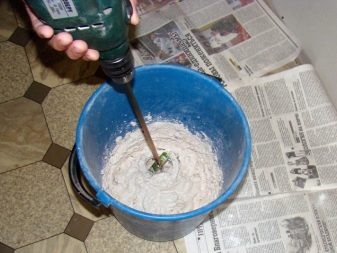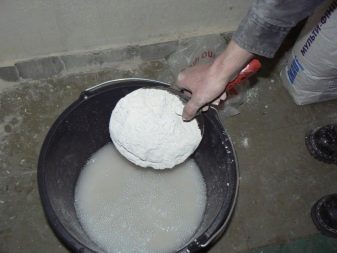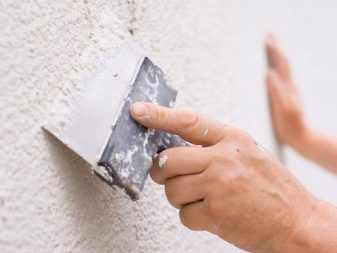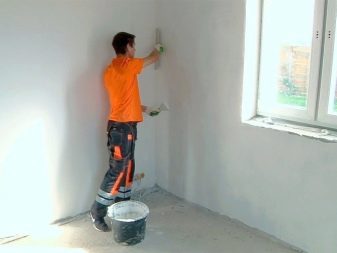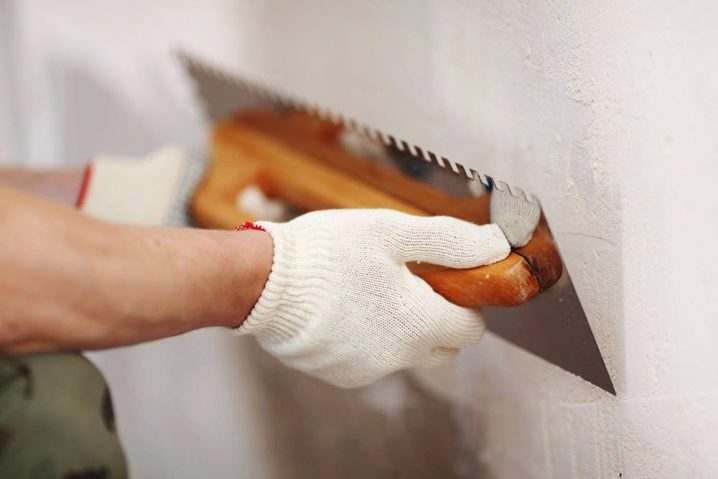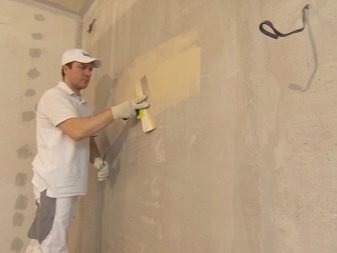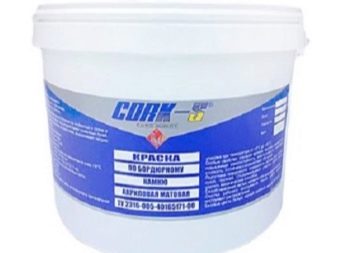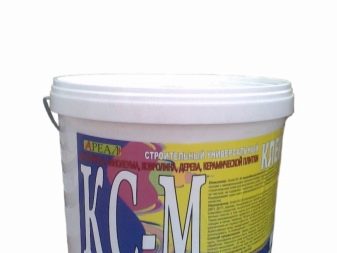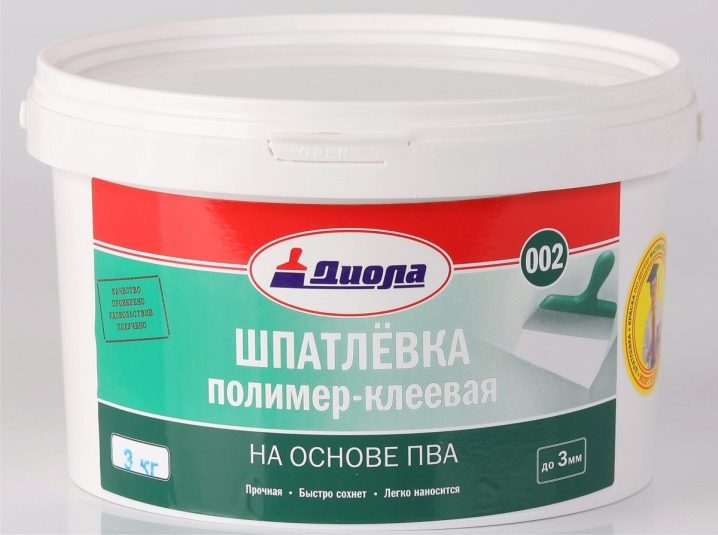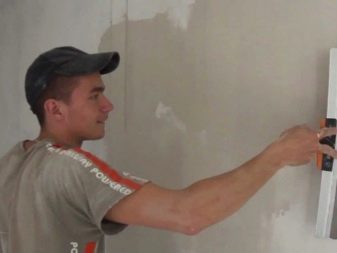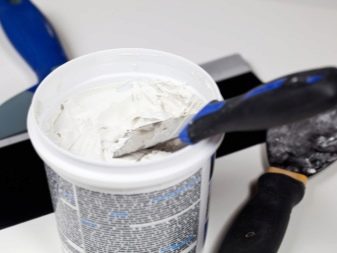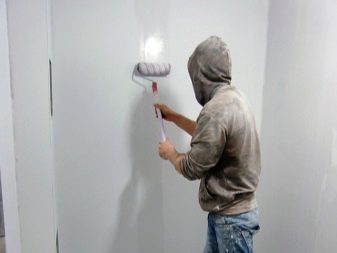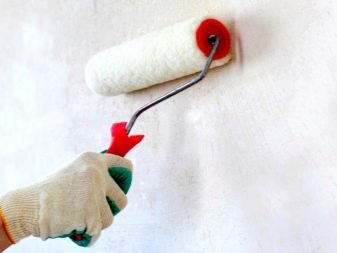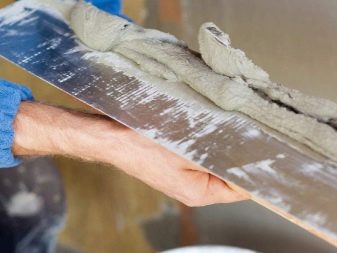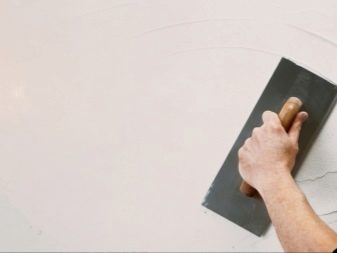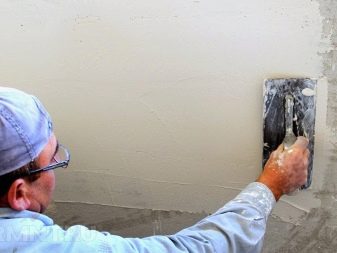PVA based filler: features and characteristics
In the market of building materials there are many types of putty for walls and ceilings. Each has its own unique characteristics and scope.
One of the most popular types of such material is PVA based putty. In this article we consider the features and characteristics of the composition in more detail.
Properties
Polyvinyl acetate is easily mixed with water, and upon drying forms a film with excellent adhesion properties. Therefore, the filler based on PVA fits well on most types of material and is universal when performing interior decorating.
For leveling walls, putty based on polyvinyl acetate emulsion is not suitable, as the mixture forms a very thin layer.Basically, this mixture is used to treat the walls before painting or sticking wallpaper. PVA based filler can be used as a finishing layer. The surface treated with such a composition will differ in whiteness and even structure.
Dry putty has a long shelf life in the absence of high humidity in the room. The prepared mixture will be suitable for use within twelve hours.
Store the solution in a closed container, then the putty will not settle and not stratify.
Application
Polyvinyl acetate based putty is used for interior walls and ceilings. You can use this material not only for wallpaper and paint, but also as a facing coating. Finishing material is convenient for its versatility: no need to buy different compositions for each type of surface.
PVA putty fits almost any material:
- brick;
- wood;
- cellular concrete;
- polystyrene foam;
- drywall;
- plaster;
- paints and varnishes;
- MDF;
- Chipboard.
In addition to the standard application, putty can be used for the manufacture of decorative elements.
Due to its composition and special characteristics, PVA-based putty is well suited for modeling and making various handicrafts.
Advantages and disadvantages
Like all other types of putties, the mixture based on PVA has its own distinctive features and advantages. Highlight the main advantages of this material:
- high rates of adhesion to various surfaces;
- smooth and even surface;
- has no unpleasant odors;
- low probability of cracking on the surface, as this type of putty has good elasticity;
- easy to apply;
- environmental friendliness;
- resistance to the formation and spread of mold and mildew;
- perfect white color.
The main disadvantage of such material is primarily in the limited scope of application. PVA putty cannot be used:
- For outdoor work.
- To align the walls. In order to avoid delamination and the formation of cracks such material should not be applied in a thick layer.
- For decorative trim.
- Under the ceramic and tile.
- In rooms with high humidity.
In the modern market of finishing materials can be found compositionswhich are adapted for use in certain conditions. Many manufacturers are ready to offer putty, which can be used in wet areas.
The properties of moisture resistance material acquires through the addition of polymeric components to the basic composition of putty.
We make by ourselves
In the independent production of filler based on PVA has its own advantages and disadvantages. The advantages include:
- Saving. All the components necessary for the manufacture of the mixture, are quite affordable and have a low cost. In addition, you do not have to overpay for brand awareness.
- Quality mixture. You can independently change the composition and proportions to improve the technical characteristics of putty.
The main disadvantage of homemade mix is the lack of special components that are added to the basic composition in industrial production to improve its properties. In order to make a PVA-based putty at home, the following components are required:
- polyvinyl acetate emulsion;
- water;
- any dry finishing putty;
- glycerol.
PVA glue must be diluted in water in proportions of one to one. To the mixture obtained, add glycerin and putty. The solution is stirred until a creamy consistency is obtained.
For the manufacture of finishing putty for wood processing used chalk and white glue. The method of manufacture is quite simple: glue with PVA glue is gradually poured into the chalk until a paste is obtained. It is important not to forget to thoroughly stir the solution and break up lumps..
If it is necessary to make a basic putty or a mixture for embedding cracks in the wood, you need to add fine sawdust to the mixture of PVA and chalk.
The disadvantage of this solution is quite a long drying process.
Manufacturers
Despite the uncomplicated composition and ease of manufacture of finishing materials based on PVA, it is recommended to purchase the finished product. In terms of industrial production of putty, special substances are added to the main components, which improve the quality and characteristics of the finished material.
To reduce the likelihood of buying a putty of poor quality, it is worth making a choice in favor of well-known manufacturers, after having studied reviews of products.
"Cork-S"
The company is one of the leaders in the Russian market for the production of paints and varnishes. The company also produces a large number of collections of putty mixtures.
The finishing material on the PVA dispersion "Cork-S" is suitable for exterior and interior decoration. The mixture can also be used to seal small cracks. The finished mixture is sold in plastic buckets of 3 and 15 kg.
"Area +"
The company "Areal +" manufactures environmentally friendly finishing materials from high-quality imported raw materials. The PVA putty of the company “Area” is intended for internal work and has the following characteristics:
- pure white surface color;
- has no smell;
- high plasticity rates.
Available finishing material in banks of 1.5 and 3 kg and in bags of 15 kg. You can store putty in a tightly closed container at a temperature not lower than five degrees Celsius.
"Diola"
Diola is a major producer of building and finishing materials. The products of this company are manufactured using imported high quality components.
Filling "Diola" polymer-adhesive based on PVA is designed for applying a topcoat on the walls and ceiling.The coating can be applied before pasting wallpaper or painting with any kind of paint and varnish materials. It is worth noting that the putty based on the PVA of the company "Diola" has only positive customer reviews.
Surface preparation
Apply the filler on the basis of PVA to the pre-treated walls. Plaster or base putty can be used as the base layer. Finishing work is better at a temperature of 20 to 30 degrees Celsius.
Surface preparation begins with a procedure for removing various types of contamination. After cleaning, the base is leveled with plaster based on cement or plaster.
If after the procedure of plastering the walls, irregularities and defects remain on the surface, it is recommended to apply a base layer of cement-based putty. The ease and speed of the application of the final layer will depend on the quality of the preparatory work.
After the foundation for the finishing is prepared, it is necessary to thoroughly clean the base layer from dust and dirt. Dust can be removed with a regular vacuum cleaner.and to remove dirty stains, you must use a damp cloth or sponge.
To remove greasy dirt, the surface can be treated with a solvent.. The final step before applying the putty will be surface treatment with a primer. It allows you to significantly increase the level of adhesion. In addition, this procedure will extend the service life of the coating.
Priming the surface preferably in three layers. Before each subsequent application of the primer, the previous layer should be completely dry.
Drawing
After the base for the putty is prepared, you can begin to apply the finishing layer.
The following tools will be required for finishing work:
- Metal narrow and wide putty spatula. Used to apply the mixture on the walls. The tool must be absolutely clean.
- Construction gun. Required for sealing sealant cracks in the surface.
- Construction film and masking tape.
- The mixer is construction.
Polyvinyl acetate quickly and deeply penetrates into the structure of almost any surface, so it will be difficult to remove contaminants from putty.In order not to stain the room during the finishing works, the windows, floor and doors must be covered with a film of polyethylene. The film can be fixed on surfaces with masking tape.
If there are wide and deep cracks on the wall, they must be sealed with “liquid nails” mounting glue or sealant. First, dirt and dust are removed from the crack. After stripping the crack needs to be expanded and patched with a construction gun.
The next step is to prepare the solution for application. If you purchased dry putty, you need to prepare the mixture according to the instructions on the package.. If you bought a liquid putty, before applying it is desirable to stir using a construction mixer.
Putty is applied to the surface with a wide metal spatula. Evenly distribute the mixture on a wide spatula using a narrow tool. Layers must be applied to the wall in broad movements. The thickness of the layer should not be less than 0.5 millimeters. Drying time can be twenty-four hours. Using a polyurethane grater, you can polish the finishing putty to make it smoother and smoother.surface.
You will learn more about PVA filler on the following video.
